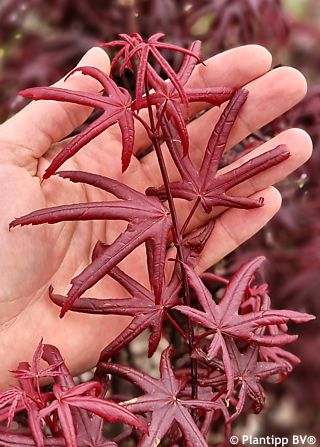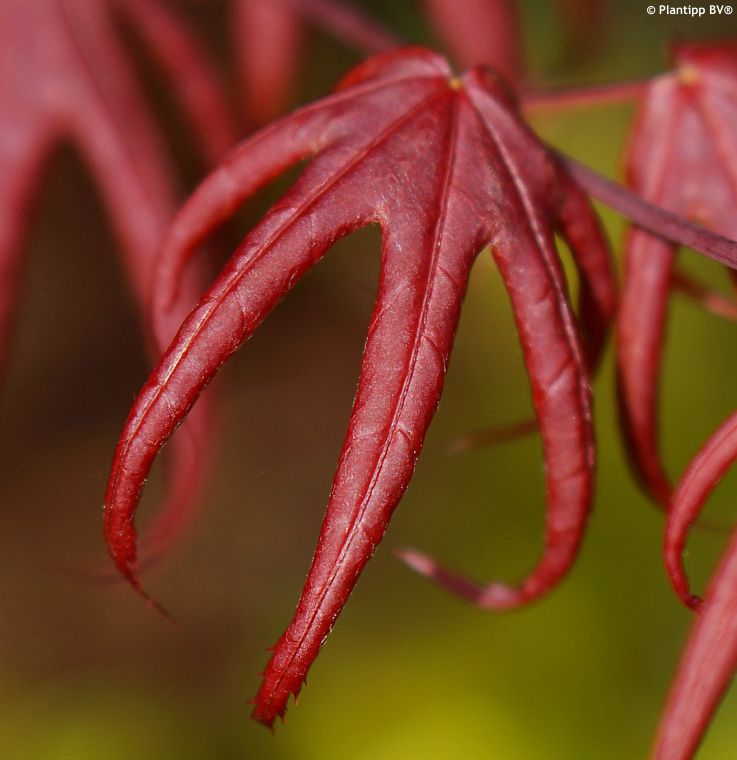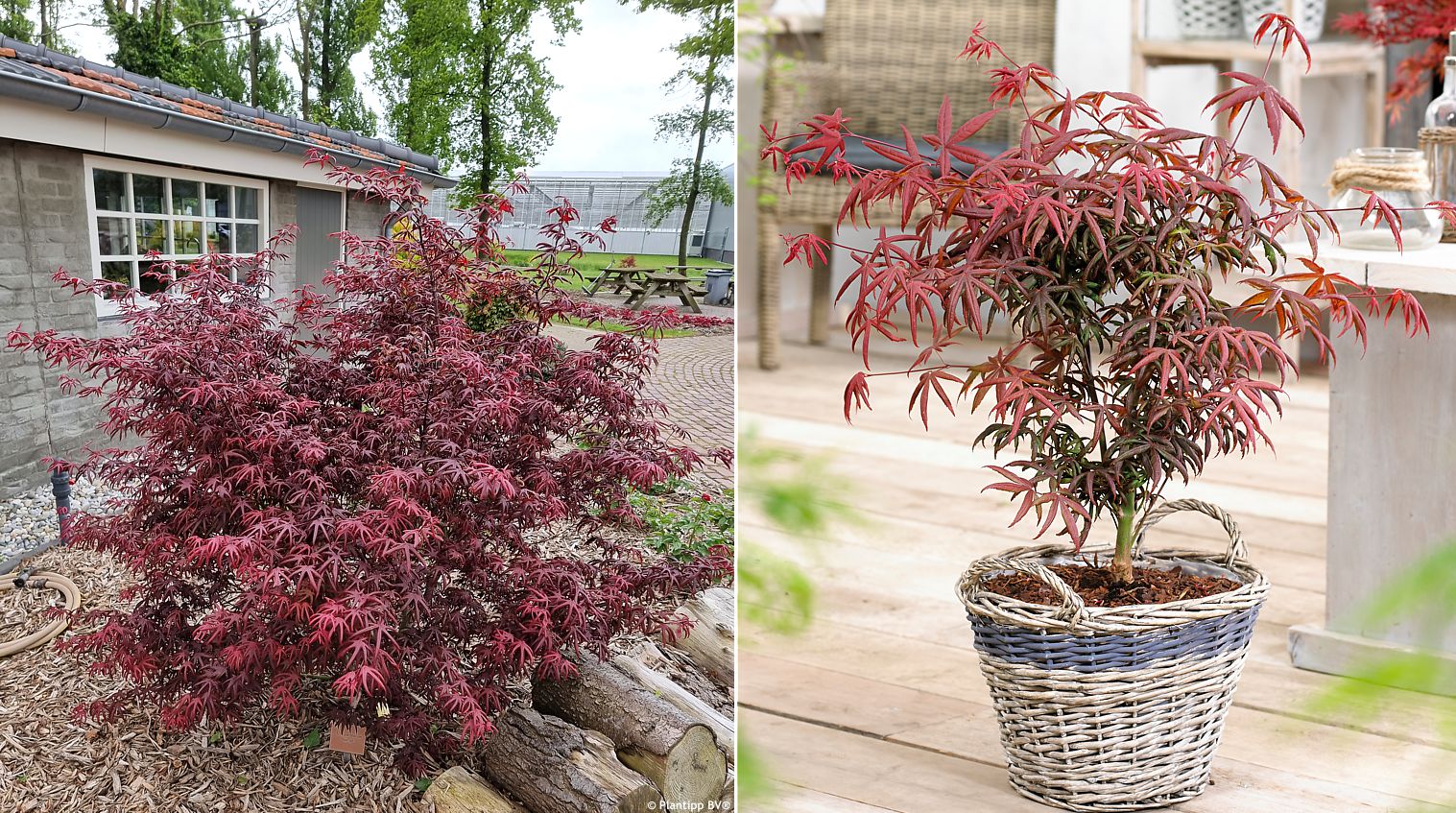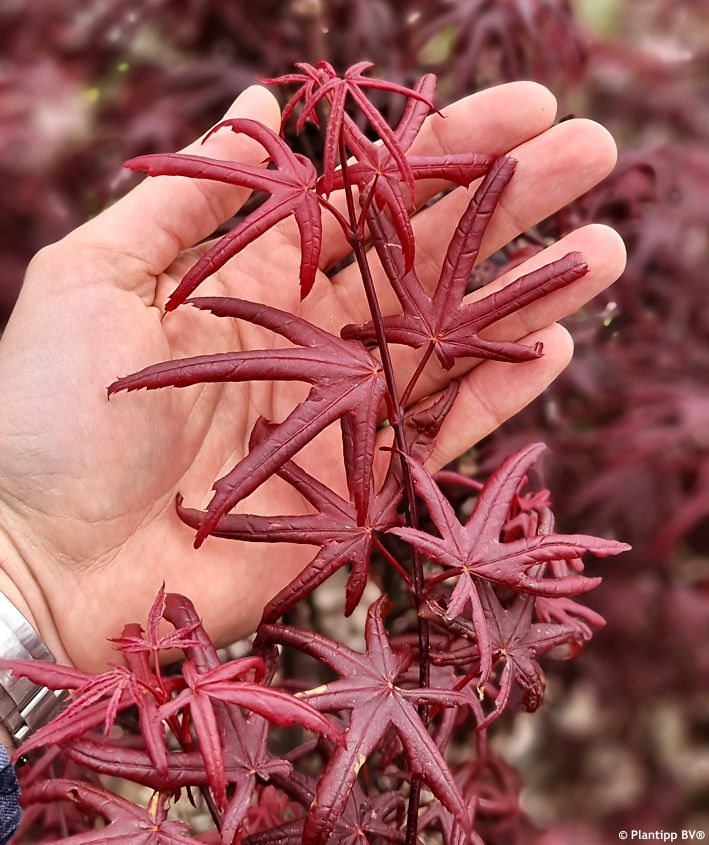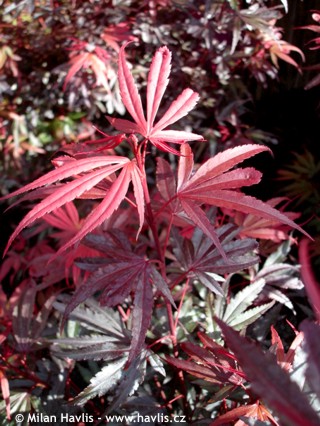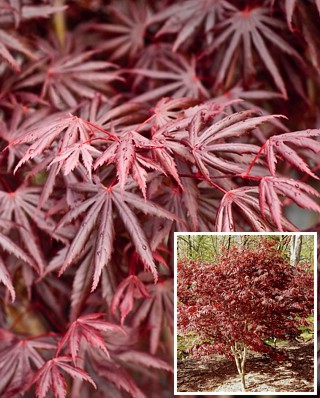Acer palmatum 'STARFISH' Japanese maple
size/type
medium-sized shrub,taller shrub
usual height
1,5-2m
usual width
1,5-2m
leaves
deciduous broadleaf
colour of leaves
location
full to partial sun
soil type
acidic (peaty)
soil moisture requirements
evenly moist but well-drained
USDA zone (lowest)
5b (down to -27°C)
winter protection
for zone 5+6

for zone 7

categorized
Acer
Japanese maples are very decorative and usually low shrubs, occasionally small trees, with attractive foliage and picturesque structure. There are many varieties in various shades of green, chartreuse, golden and yellow, red to maroon, and even multicoloured (variegated). They originate from Asia (Japan, China, Korea), where they have been cultivated for at least two centuries or perhaps even longer, however, they were introduced to Europe only at the beginning of the 19th century, specifically to Great Britain in 1820. Interestingly, the botanist Carl Peter Thunberg described them much earlier, in 1784, because he undertook an expedition to Japan in 1775-1776, discovering new species and collecting seeds and plants. He named the tree Acer palmatum, referring to the leaf shape resembling a human hand with fingers, although it is said that they first reminded him of frog fingers, which is also one of its oldest Japanese names: kaede. The other is momiji (baby hands). The beauty of the colours and shapes of the leaves and trees is reflected in many arts, for example, in the oldest preserved collection of Japanese poetry from the 8th century, the Man'yōshū (Collection of Ten Thousand Leaves). The Chinese poet Wang Wei (699-759) celebrated their beauty in many of his works, and naturally, maples often appeared in ancient paintings, tapestries, porcelain, and wherever classic and traditional decorations associated with the symbolism of these maples were desired: beauty and elegance, serenity, endurance, vitality, and transformation.Description of the plant:
Starfish is a Japanese maple variety with utterly unique leaves which do recall tentacles of the sea creature of the same name. The leaves are palmately divided into commonly 5 narrow fingers with downwardly curved margins. They are deciduous, vivid red as they emerge, deep maroon when mature, and again bright red in autumn. Starfish maple grows moderately into a well-branched, broadly vase-shaped shrub, reaching about 2 m in both height and width in maturity. It was found and selected among many other maple seedlings by a Dutch grower of magnolias, maples and dogwoods Piet Vergeldt from Lottum. It was granted a European patent No. 33203 in 2012.
Japanese maples need constantly moist soil that has to be well-drained, acidic to neutral, and medium fertile. Keep it mulched all year round. It loves a location with high air humidity, e.g. at a river bank or near a pond but it is not a must. Starfish will grow in full sun as well as partial shade where it will keep its red leaves unlike most other red-leaved maple varieties which tend to gain more green shades without direct sunlight. It is disease tolerant. It hardy and expected to withstand temperatures down to at least -27 °C (USDA zone 5b), and is suitable for outdoor planters, too, if kept moist without a saucer.
Last update 02-01-2023
QUICK PRICE OVERVIEW
CURRENTLY SOLD OUT












